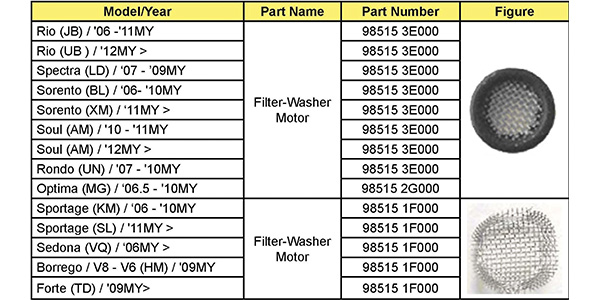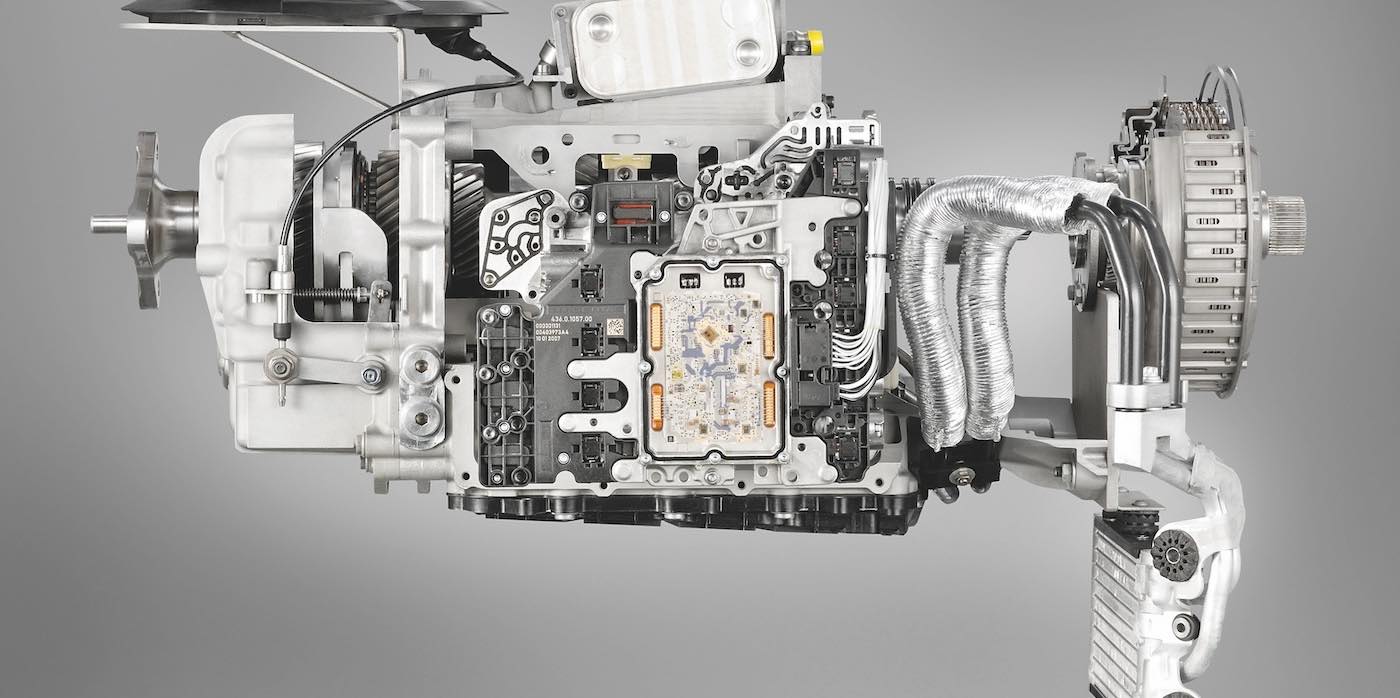
Complaint:
Possible foreign debris can accumulate on the windshield washer pump inlet filter and cause a weak spray. Over time, this can cause some Kia vehicles to exhibit a limited application of windshield washer fluid when the washer function is used.
Correction:
To correct this condition, replace the washer pump inlet filter and perform the windshield washer reservoir flushing procedure outlined in this TSB. Do not replace the windshield washer pump.
1. Operate the windshield washer function to verify the customer’s concern. If the windshield washer fluid application is restricted, proceed to step 2.
2. Low windshield fluid flow can be caused by restrictions at the windshield washer pump inlet filter. Some vehicles may require the complete removal of the windshield washer reservoir to access the washer pump.
3. With the windshield washer pump removed from the reservoir, check, and, if necessary, remove the existing inlet pump filter with a small pick or flat-bladed screwdriver. Replace the inlet filter with the new service part. Do not install the washer pump back into the washer reservoir until completion of step 4.
4. Place a large container under the washer reservoir and use shop water to thoroughly rinse the internals of the reservoir and flush out any foreign debris.
5. Install the windshield washer pump, with the newly installed inlet filter, to the washer reservoir. If the reservoir was removed, install the assembly into the vehicle in the reverse order of removal.
6. Fill and leak-test the reservoir and confirm proper system operation.













